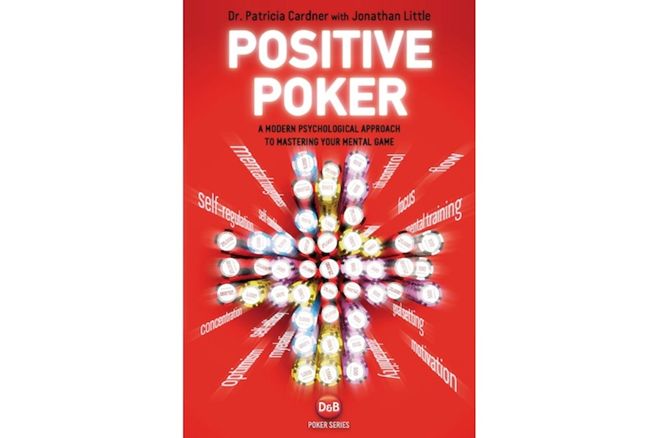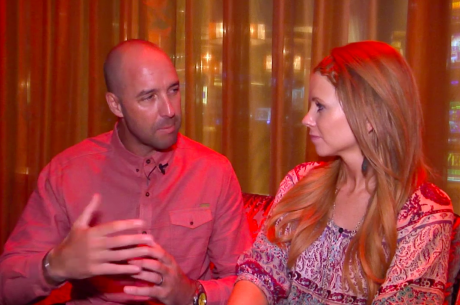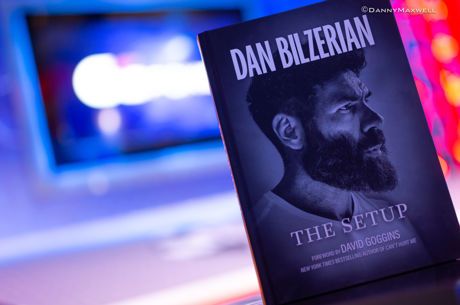PokerNews Book Review: Positive Poker by Dr. Tricia Cardner with Jonathan Little

We’re all familiar with how psychology plays an important role in poker, a game in which the clashing of differing personalities, motives, and skills produces an endlessly interesting dynamic that keeps poker both fresh and challenging.
During recent years an increasing number of professional players have come to acknowledge the usefulness of being able to improve one’s “mental game” by mastering the psychological side of poker. The new book Positive Poker by Dr. Tricia Cardner with contributions from Jonathan Little provides much of value to help in that effort by clearly explaining a number of psychological concepts and their relevance to poker while also providing concrete strategies for improving one’s mental game.
Taking the Mystery Out of the Mental Game
“Virtually all poker players recognize the importance of psychology to being a winning player,” notes Cardner in the introduction to Positive Poker. “But many consider their mental state to be a random factor over which they have little control.”
Drawing upon a background that includes two doctorates (in criminology and psychology) as well as extensive experience as a teacher of university courses in psychology and as a licensed professional counselor, Cardner proposes to show that not only are our mental states not “random” or entirely subject to outside factors, but we are able to control our mental state via a variety of consciously practiced strategies that have been proven to work both in poker as well as in other contexts.
Based both on her dissertation Peak Poker Performance: A Qualitative Case Study (for which a summary of findings is included in an appendix) and a course she developed and taught for several years on the psychology of poker, Cardner’s book brings together ideas and concepts from three different fields — positive psychology (“the scientific and applied approach to uncovering people’s strengths and promoting their positive functioning”), neuropsychology (“the study of the structure and function of the brain as it relates to specific behaviors and psychological processes”), and sport and peak performance psychology (“concern[ing] the psychological factors that influce participation and performance in competitive endeavors”).
Despite the book’s academic underpinnings, Positive Poker is written for a wide audience in an especially accessible style that finds Cardner presenting various concepts and strategies in a highly readable and even at times entertaining way. The fact that Cardner herself is a poker player with numerous cashes — among them final tabling the Winstar World Casino's 2012 River Poker Series Main Event where she finished sixth for a nearly six-figure score — helps her as well when it comes to translating psychological insights into practical poker terms.
Specific Strategies to Build One’s Psychological Skills
As part of the effort to take the mystery out of what affects our mental states and give us concrete advice for learning how to build a psychological “skill set” that can help us at the poker tables, Cardner organizes the book according to nine different “positive strategies” that can be learned and developed individually, devoting a chapter to each. Those strategies are...
- Developing talent and expertise
- Goal setting
- Understanding and mastering self-control
- Remaining motivated
- Finding focus and improving concentration
- Increasing self-confidence
- Mastering tilt
- Building mental toughness
- Dealing with the ups and downs of poker
With each Cardner begins by defining the strategy while also explaining the reasons why it can be beneficial for poker players. These discussions often incorporate Cardner’s research, drawing upon other sources to identify major findings related to each.
For example, in the chapter “Innovative Strategies for Goal Setting,” Cardner initially addresses the usefulness of goal setting (to give a sense of control, to provide structure, to help with self-confidence, and more), then she cites others’ findings to help narrow down her advice to particular methods of setting goals that have been proven useful (including making goals challenging but achievable, setting goals in positive terms, making both short-term and long-term goals, among others).

What results is not only an informative discussion of each strategy, but many specific instructions readers can immediately follow and apply themselves as part of a larger effort to improve their mental games. Thus in the chapter “Mastering Tilt” one finds an explanation of various “tilt styles,” talk of how the brain’s function contributes to tilt, a short history of psychological investigations into emotional control, then several methods for controlling tilt (such as keeping a “tilt log,” a “one minute reality check” and/or “two minute meditation,” plus numerous other strategies).
Putting Ideas Into Practice with the Pros
Helping make the advice all the more applicable to poker are the contributions of several successful professional players Cardner interviewed for her dissertation and the book, as well as the substantial additions provided by Jonathan Little, himself an accomplished strategy author and coach with a couple of World Poker Tour titles and more than $5 million in tournament winnings to his credit.
Cardner spoke with eight different pros (referred to by pseudonyms) about the various concepts and strategies addressed in the book, and incorporates quotes from the pros frequently to help show how a given strategy has applied to their own success at the tables. For example, in an initial chapter “Setting the Stage for Positive Poker,” Cardner speaks of the importance of good nutrition and exercise and how a healthy lifestyle can improve one’s chances to play a strong mental game, then quotes from several of the pros speaking of their own commitment to eating well and keeping fit to support the advice.
Little’s more extensive contributions come at the end of each chapter, showing in each case how putting the strategies discussed into practice can result in success at the tables. His contributions also help show the reader how some of the recommended strategies have applied more directly to him than others, and indeed most who pick up Positive Poker will likely find certain chapters and ideas more immediately relevant to their own situations.
A Positive Contribution to Poker Learning
As someone who has read and reviewed several books addressing the psychology of poker, I can say Positive Poker is an especially enjoyable read that presents sometimes complicated ideas in easy-to-digest ways — not always the case with books of this type. The anecdotes and summary presentations of the findings of others are engaging throughout, and I even found the occasional explanations of brain functions fascinating. (Also useful are the chapter-concluding lists of “References and Further Reading.”)
With a comprehensive approach to the topic of poker psychology and extensive advice sharing a number of strategies for improving one’s mental game, Positive Poker should appeal both to seasoned players and to those just getting started with poker who are discovering the way the game can challenge even the most mentally strong among us.
Positive Poker by Dr. Tricia Cardner and Jonathan Little is available in paperback, audio, and e-book formats via D&B Poker. You can also pick up a copy through the PokerNews Book Section by clicking here.
Want to stay atop all the latest in the poker world? If so, make sure to get PokerNews updates on your social media outlets. Follow us on Twitter and find us on both Facebook and Google+!








